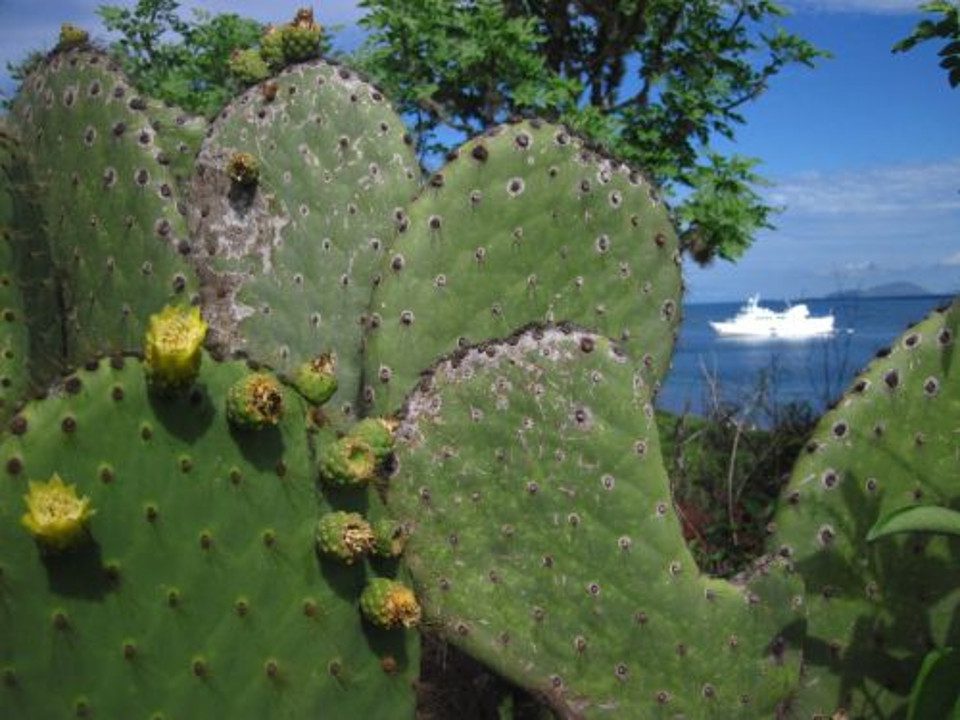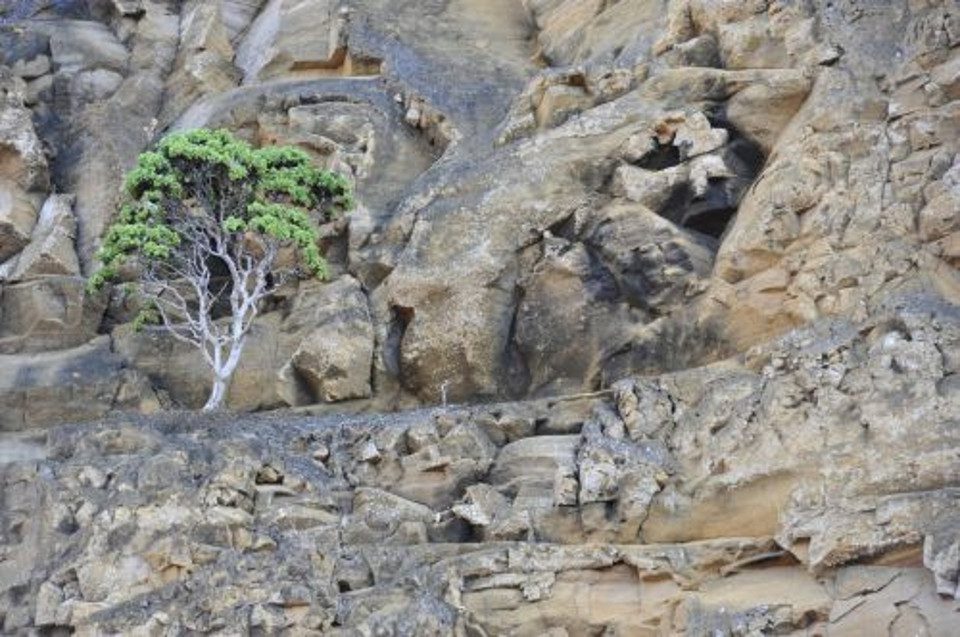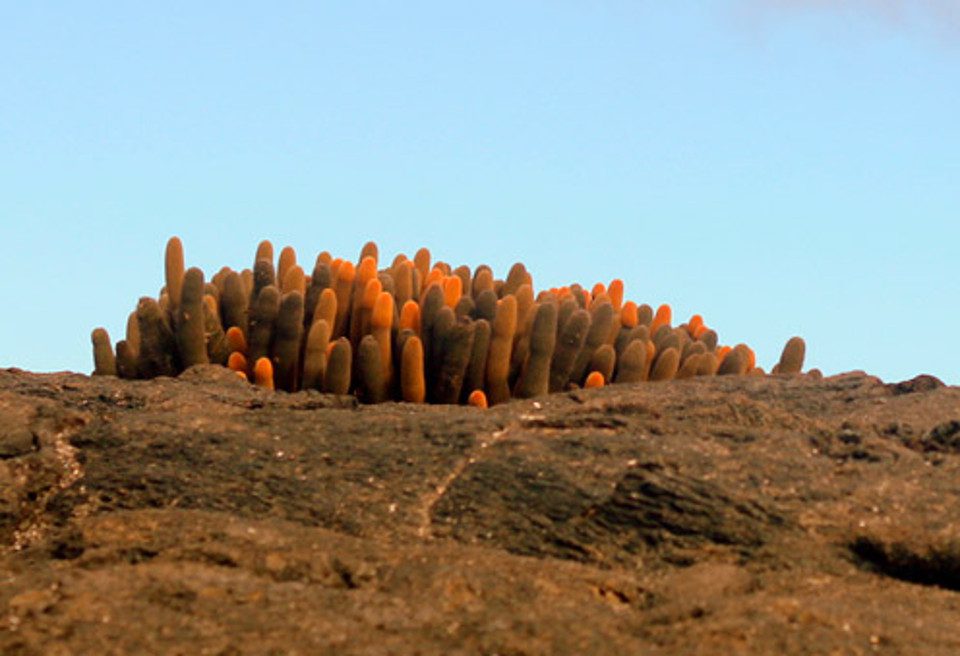TALK TO A DESTINATION EXPERT

Diego Zapata

Rosa Mena

Sandy Lara

Diego Zapata

Rosa Mena

Sandy Lara
Galapagos plant life is as strange and fascinating as its more famous fauna. Due to the particular microclimates and geological make-up of the archipelago, the islands are not filled with the lush, tropical vegetation that many visitors may expect of an equatorial environment. In reality, the Galapagos is more like a desert than like a rain forest. Yet this is another factor that contributes to this remarkable and unique ecosystem: Galapagos plant life has had to take on many specialized adaptations to survive in this harsh climate.

It was, in fact, the vegetation of Galapagos that initially caught the eye of Charles Darwin when he arrived to the islands while traveling aboard the HMS Beagle. The iconic Darwin finches came later! Darwin included Galapagos plant life in his influential natural history collection, taking and labeling samples of over 200 species of Galapagos flora. Just like the island’s unique fauna, in the plants of Galapagos we can find a complex narrative of the process of adaptive radiation.
7 genera of Galapagos plants are unique to these islands, and there are 600 endemic species of vascular plants. In addition to native plant life, there are around 825 introduced plant species. This is a notably high rate of endemicity.
How Galapagos Plant Life Reached the Islands
600 miles at sea is a long journey for a terrestrial plant species! The plant species that have reached Galapagos have done so by way of wind currents, floating rafts of debris, and the digestive tracts of birds. With this in mind, it is easy to understand why most Galapagos plant life reproduces with small, lightweight seeds. Other plants produce seeds with special dispersal mechanism.

With the cold water currents that surround the islands, the Galapagos is surprisingly dry, receiving little rainfall. These conditions, combined with the strong equatorial sun, contribute to the desert-like climate of most of the Galapagos Islands. Although the highlands of some islands receive enough precipitation to grown more tropical vegetation, the majority of Galapagos plant life is adapted to arid coastal conditions.
The Palo Santo trees that grow on the islands, for example, are able to shed their leaves during dry periods, which allows them to save water. The leaves of the leather bush grow vertically. This helps them to avoid direct sunlight. However, overall the islands are very young in geological terms, and Galapagos plant life has had relatively little time to develop and adapt into different species. They are still in the middle of an evolutionary process.
Variations of Galapagos Plant Life
We can track the patterns of Galapagos vegetation, its adaptation and diversification, according to the islands’ 3 habitat zones. The first, the coastal zone, is mostly characterized by salt-resistant plants. In the second, the arid zone, most of the plants that grow are succulent cacti and leafless shrubs. It is in the third habitat zone, the highlands, that we are able to find more tropical vegetation, in this case green Scalesia forests. These 3 habitat zones provide only a broad categorization, however, can be divided into up to 7 grades of transition between each zone.

The islands’ multiple microclimates further contribute to species variations between different islands. The climatic variations have produced impressive examples of what evolution specialists refer to as “adaptive radiation.” For example, the Scalesia tree, a genus endemic to the Galapagos, has developed into 15 species. Scientists have referred to them as the Darwin finches of the plant world! Fun fact: Did you know the Scalesia tree is actually a giant daisy! Yes, you read that right! The Opuntia cactus offers another example of this adaptive radiation. 14 varieties of this cactus are endemic to the islands. One has even evolved to develop a bark around its base to keep iguanas away, not to mention growing 10 meters tall!
The best way to check out Galapagos plant life for yourself is by taking an expedition on a Galapagos cruise. Metropolitan Touring’s itineraries give you the best island coverage so that you can see as many of the archipelago’s fascinating plants and animals as possible!

Javier Garcia

Eduardo Silva

Carolina Escobar
START PLANNING YOUR TRIP

Javier Garcia

Eduardo Silva

Carolina Escobar
Get in touch for more
CONTACT US
Interested in finding out more about this fascinating place? Be sure to visit our Galapagos Information page!


